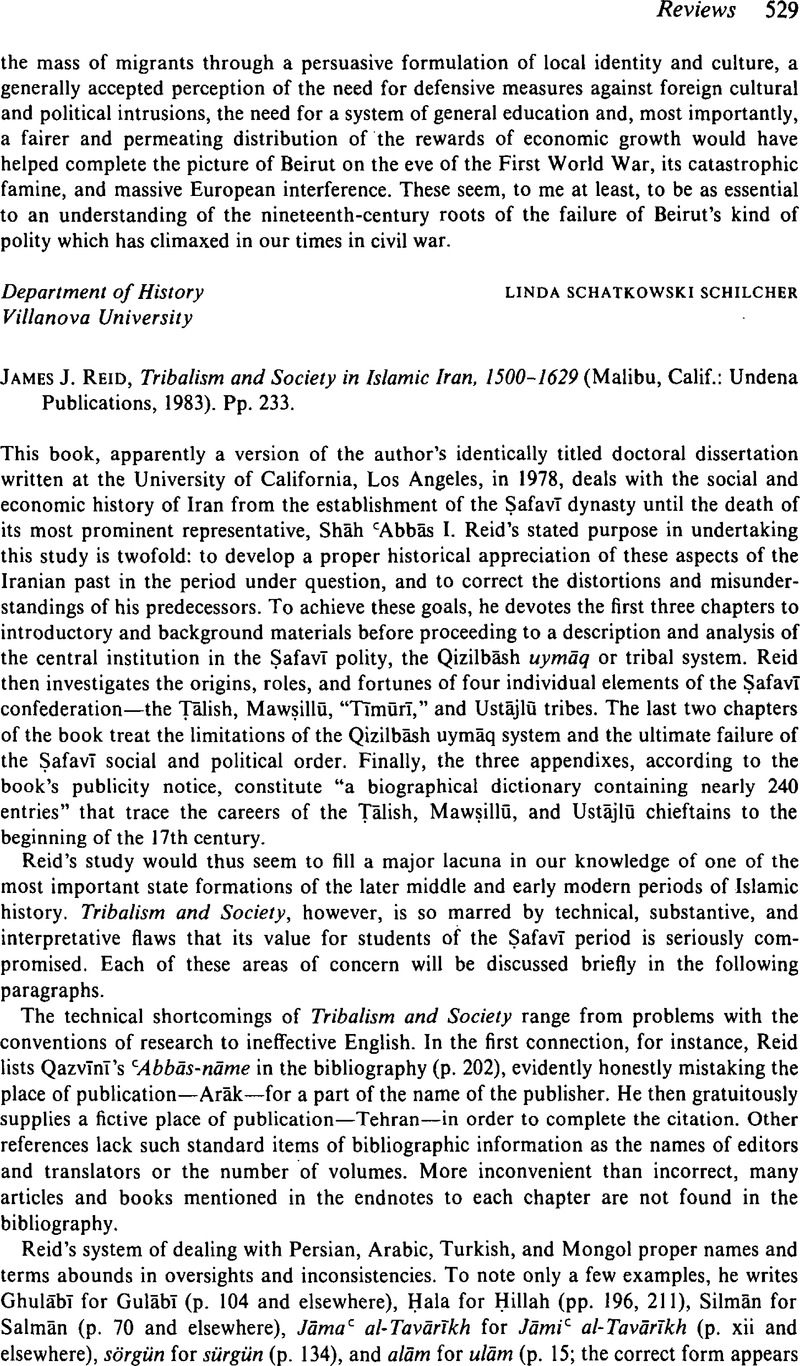No CrossRef data available.
Article contents
James J. Reid, Tribalism and Society in Islamic Iran, 1500–1629 (Malibu, Calif.: Undena Publications, 1983). Pp. 233.
Published online by Cambridge University Press: 29 January 2009
Abstract

- Type
- Book Reviews
- Information
- Copyright
- Copyright © Cambridge University Press 1986
References
1 See the following articles, all published in Iranian Studies: Helfgott, Leonard M., “Tribalism as a Socioeconomic Formation in Iranian History,” 10 (1977), 36–61;Google ScholarReid, James J., “The Qajar Liymaq in the Safavid Period, 1500–1722,” 11 (1978), 117–43;Google ScholarReid, James J., “Comments on ‘Tribalism as a Socioeconomic Formation in Iranian History,’” 12 (1979), 275–81;Google ScholarMcChesney, R. D., “Comments on ‘The Qajar Uymaq in the Safavid Period,’” 14 (1981), 87–105;Google ScholarHelfgott, Leonard M., “Tribe and Uymaq in Iran: A Reply,” 16 (1983), 73–78;Google ScholarReid, James J., “Studying Clans in Iranian History: A Response,” 17 (1984), 85–92.Google Scholar
2 Horst, Heribert, Tīmūr und Hōgäoga ⊃Alī, Abhandlungen der Akademie der Wissenschaften und der Literatur, Geistes- und Sozialwissenschaftliche Klasse, 2 (Wiesbaden, 1958);Google ScholarIslam, Riazul, Indo Persian Relations (Tehran, 1970), Appendix A, pp. 187–91.Google Scholar
3 See, for example, Bombaci, Alessio, Storia della letteratura turca dall'antico impero di Mongolia all'odierna Turchia (Milan, 1962), p. 349.Google Scholar


